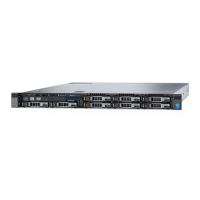Table 27. Integrated Devices details (continued)
Option Description
Embedded Video Controller Enables or disables the use of Embedded Video Controller as the primary display.
When set to Enabled, the Embedded Video Controller will be the primary display
even if add-in graphic cards are installed. When set to Disabled, an add-in graphics
card will be used as the primary display. BIOS will output displays to both the primary
add-in video and the embedded video during POST and pre-boot environment. The
embedded video will then be disabled right before the operating system boots. This
option is set to Enabled by default.
NOTE: When there are multiple add-in graphic cards installed in the
system, the first card discovered during PCI enumeration is selected as
the primary video. You might have to re-arrange the cards in the slots in
order to control which card is the primary video.
Current State of Embedded Video
Controller
Displays the current state of the embedded video controller. The Current State of
Embedded Video Controller option is a read-only field. If the Embedded Video
Controller is the only display capability in the system (that is, no add-in graphics card
is installed), then the Embedded Video Controller is automatically used as the primary
display even if the Embedded Video Controller setting is set to Disabled.
PCIe Preferred IO Bus When set to Enabled, you can provide the Bus address (in decimal) to choose end
device for preferred IO Bus. This option is set to Disabled by default.
Enhanced Preferred IO When set to Enabled, the LCLK speed for the root complex where Preferred IO is
enabled will automatically be set to 600 MHz (effective 593 MHz).
SR-IOV Global Enable Enables or disables the BIOS configuration of Single Root I/O Virtualization (SR-IOV)
devices. This option is set to Disabled by default.
Internal SD Card Port
Enables or disables the internal SD card port of the Internal Dual SD Module
(IDSDM). This option is set to On by default.
Internal SD Card Redundancy
Configures the redundancy mode of the Internal Dual SD Module (IDSDM). When set
to Mirror Mode, data is written on both SD cards. After failure of either card and
replacement of the failed card, the data of the active card is copied to the offline
card during the system boot.
When Internal SD Card Redundancy is set to Disabled, only the primary SD card is
visible to the OS. This option is set to Mirror by default.
Internal SD Primary Card By default, the primary SD card is selected to be SD Card 1. If SD Card 1 is not
present, then the controller selects SD Card 2 to be the primary SD card. This option
is set to SD Card 1 by default.
OS Watchdog Timer If your system stops responding, this watchdog timer aids in the recovery of your
operating system. When this option is set to Enabled, the operating system initializes
the timer. When this option is set to Disabled (the default), the timer does not have
any effect on the system.
Memory Mapped I/O Limit Controls where MMIO is mapped. The 1 TB option is designed for specific OS which
cannot support MMIO over 1 TB. This option is set to 8 TB by default. The default
option is the maximum address that the system supports and recommended in most
cases.
Slot Disablement Enables or disables the available PCIe slots on your system. The slot disablement
feature controls the configuration of the PCIe cards installed in the specified slot.
Slots must be disabled only when the installed peripheral card prevents booting into
the operating system or causes delays in system startup. If the slot is disabled, both
the Option ROM and UEFI drivers are disabled. Only slots that are present on the
system will be available for control.
Slot n: Enables or disables or only the boot driver is disabled for the PCIe slot n. This
option is set to Enabled by default.
Slot Bifurcation Slot Discovery Bifurcation Settings allows Platform Default Bifurcation and
Manual bifurcation Control.
34 Pre-operating system management applications

